On a recent Saturday night, I spent six hours listening to an innovative musical playlist combining instrumental, orchestral, and electronic music that was unlike anything I’ve ever heard. All while floating on the beautiful compound 4-AcO-DMT, a synthetic form of psilocybin (the active ingredient in magic mushrooms). What could be more perfect than psychedelic music?(1)
Sounds like a good time, right?
On the contrary, it was painful, it was work, and it was not at all what I wanted to do that evening.
I was very tired, not in the mood for deep introspection, and frankly, I just wanted to have some ramen noodles, watch some snarky stand-up comedy, and go to bed early.
Instead, I decided to spend hours lying down, motionless, engaged in a psychedelic journey while listening to a one-off six-hour musical experience uniquely designed for grief.
I already knew going into the experience that it would drag me into a difficult place and rip me apart. But I embarked on this solitary, sad journey because I knew that experience was necessary to write this piece exploring why music is integral to all psychedelic-assisted therapy.
I didn’t do this because I needed to understand how psychedelic-assisted therapy can cause deep catharsis. I already knew this, both from several powerful, personal experiences and from a decade of professional research.
I did this because I needed to fully experience new musical designs in order to write this piece.
The music was composed by a software platform called Wavepaths, created by Dutch neuroscientist Dr. Mendel Kaelen. It uses a vast menu of original music samples produced by world-class artists—ranging from timeless acoustic instruments such as strings, winds, and choirs, to quirky modern electronic creations—all mixed together with “an AI-powered auditory landscape designed to be responsive to every moment of a therapy session.”(2)
I first met Kaelen in 2015, and over the following eight years, I became familiar with the engineers, technologists, and musicians who work with Wavepaths as it evolved. Their goal: to produce music as a form of therapy in and of itself. Music that can induce cathartic healing whether the listener is sober or altered.
It is important to note: Kaelen provided me with a playlist of music for grief to be taken sober. Some studies have indicated that music alone may induce the same insights as psychedelic drugs. It was my personal (and well-informed) choice to combine the music with synthetic psilocybin, because I knew throwing a psychedelic into the musical mixtape would kick my cathartic release into the next gear.
As mentioned, and as weird as it sounds, spending an extended period of time on a psychedelic and listening to music was “work.” Work in the sense that it was necessary for research, and because it meant dealing with my grief over my irreplaceable mother, who died almost two years ago. The six hours I spent in this state was unspeakably painful – and ultimately cathartic.
I am beyond glad I put in the time, because – as always – the experience induced phenomenally healing insights. And the new musical designs from Wavepaths were truly unlike anything I’ve ever heard.
Why Your Playlist Matters For Psychedelic Healing
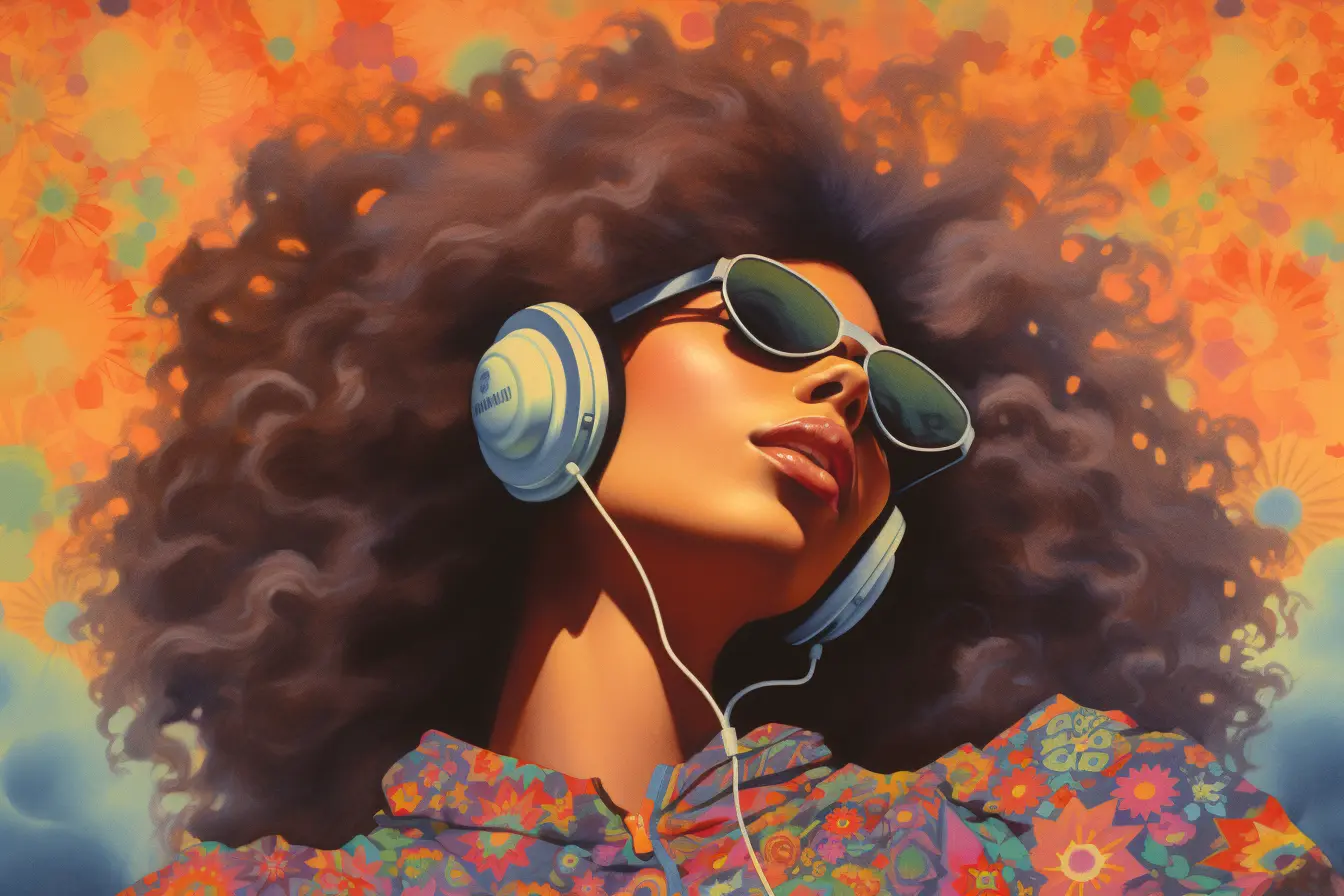
Over the years, I have heard a lot of music. I grew up in the music industry: my father is a rock promoter in Toronto. I was a “backstage baby”, taken to his gigs and festivals in diapers from the day I was born. I studied the piano for ten years, achieving “teacher training” level at the Royal Conservatory of Music in Toronto. I then worked at a nightclub for five years when I was at university. In my 20s and 30s put on events at music festivals for six years. I have spent my entire life immersed in the world of music.(3, 4)
But what I heard on that Saturday night was unlike anything that had graced my ears before – sober or otherwise.
My initial “true” experience of psychedelic therapy took place in 2017 when I took LSD and listened to the playlist used in the Imperial College London trials examining psilocybin as a treatment for depression.(5)
Though I had written about psychedelic therapy since 2012 when researching for my first book Sex, Drugs and Rock n’ Roll: The Science of Hedonism and the Hedonism of Science, it was not until 2017 that I truly experienced it the way it was devised in the 1950s, and the way it is still practised today in all academic and clinical trials. In this setting, patients ingest a strong psychedelic, such as LSD, DMT, or psilocybin, then spend four to eight hours lying down, listening to music with headphones and a blindfold, typically with one or two therapists on hand.
Why blindfolded? Removing visual stimulation allows the brain to fully focus on sounds, without any other sensory inputs. Without visual distractions, neuroscience tells us this can set the stage for profound internal insights.
Why include a therapist? For support and guidance – which many need if they are “psychedelic naïve” (meaning you haven’t experienced psychedelics) and nervous.
I, however, have always undertaken this journey completely alone, which some consider dangerous in case you have a “bad trip.” But solitude is much better suited to my needs, as only then can I completely let go.
In fact, I’ve never once in my life had a “bad trip” with a psychedelic – not once. I attribute this to my respect for psychedelics and my intention to only take them when the time is right.
(Which of course isn’t to say that a challenging psychedelic experience isn’t possible even when you go into it with clarity and positive intentions.)
The playlist sent to me by Wavepaths had been specifically designed for grief. My mother – my favorite person in the universe and truly my best friend – died of lung cancer tragically young in May 2021. I know there is so much sadness and pain I have barely even started to process. I’ve been terrified to face it.(6)
It was five years after I started writing about psychedelic therapy, in 2017, that I had an experience that clarified what all the fuss was about. Why they call it “ten years of therapy in a day.” Why Cary Grant, who used LSD in 100 therapy sessions to heal the trauma of his mother vanishing when he was 11 years old, called it an “immeasurably beneficial healing.”
One night, I spent hours bawling uncontrollably, releasing endless tears over painful events that took place over two decades ago. And it was only the next day – when I felt like so much pain had been shed, and my spirit lightened like never before – that I understood what Albert Hoffman meant when he summed up the experience of psychedelic therapy with one of the most beautiful and succinct descriptions of a psychedelic trip anyone has put to print:(7)
I’ve had a number of psychedelic sessions in a similar manner since that time – just me with the molecules and the music – and every time I’ve experienced some form of healing. Or a revelation already nestled in my psyche, just waiting for the right catalyst – in this case, psychedelics – to pull it out of me. I’ve always had a profound insight, and I’ve always benefitted in some way.
Music Makes The Psychedelic Magic
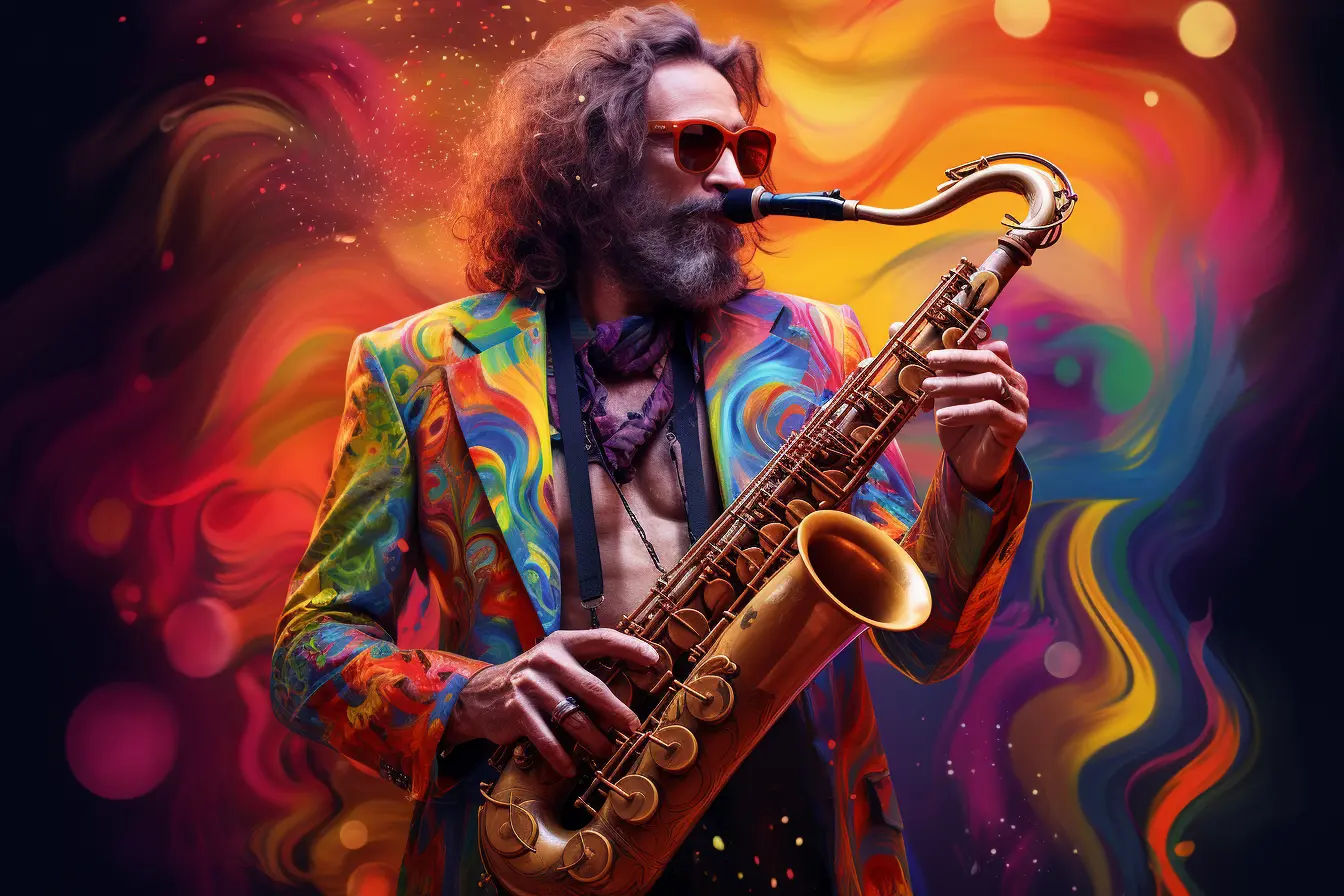
It’s now 2023, nearly two years after my mother’s death. Everyone told me the second year is the hardest. They were right. In the first year, you’re so busy going through the motions of dealing with the paperwork and the house and the practicalities, you don’t really have time to grieve – I just threw myself into my work and shoved the grief aside for a while.
For the past six months, however, I have felt waves of pain that crashed over me like a tsunami. There have been nights when I haven’t been able to sleep because the physical pain in my heart has been so intense – like 1000 knives – the agony has kept me awake. I had no idea grief felt like this.
I needed this new night of release, with this playlist designed for grief, because music has always been central to every form of psychedelic experience: from peyote rituals in the American desert, to ayahuasca ceremonies in the Amazon, to psychiatric research with LSD in the 1950s, to all the modern clinical trials. There has never been a form psychedelic healing devised without music, and I have previously suggested that instead of the term “psychedelic assisted psychotherapy”, we should rename the entire field “psychedelic-assisted music therapy.”(8, 9)
Music is more important than the drug in so many ways, which may come as a surprise to anyone following developments in psychedelic start-ups. In this nascent industry, almost all emphasis is placed on devising new molecules – slightly tweaked versions of the “classic” drugs – because new molecules are what can be patented and used to raise capital. In the eyes of some, the quest for new forms of psychedelic drugs is unnecessary. Psilocybin, Mescaline, LSD, N,N DMT, 5-MeO-DMT, MDMA and the other “classics” work just fine. That’s why the field exists in the first place, so why fix it if it ain’t broke?
Meanwhile the unsung hero of the psychedelic experience is music, because research has consistently shown that the nature of the musical experience is more important than the intensity of the drug.
In a 2018 study famously known as “the hidden therapist” paper, published in the journal Psychopharmacology, Kaelen and other researchers at Imperial College London found that “the nature of the music experience was significantly predictive of reductions in depression one week after psilocybin, whereas general drug intensity was not.”(10)
Which makes sense. Imagine listening to music you loathe whilst altered. It would make for a horrible and possibly traumatising experience. But if the music hits the right spot, it sends the entire trip in the right direction, as the 2018 paper illustrates.
“We have replicated that finding over and over again in our own research ever since,” says Kaelen.
Music has the power to send shivers down your spine, raise goosebumps on your skin, and light a fire in your heart. Sound waves can affect us like nothing else. Music releases the same neurotransmitters (the chemical “mailmen of the mind”) produced by sex and drugs, such as dopamine (the same molecule released by addictive drugs), oxytocin (the “cuddle chemical” produced by breastfeeding and orgasm), and those tasty endorphins that feel so, so good.
The Scientists Exploring Psychedelic Soundscapes
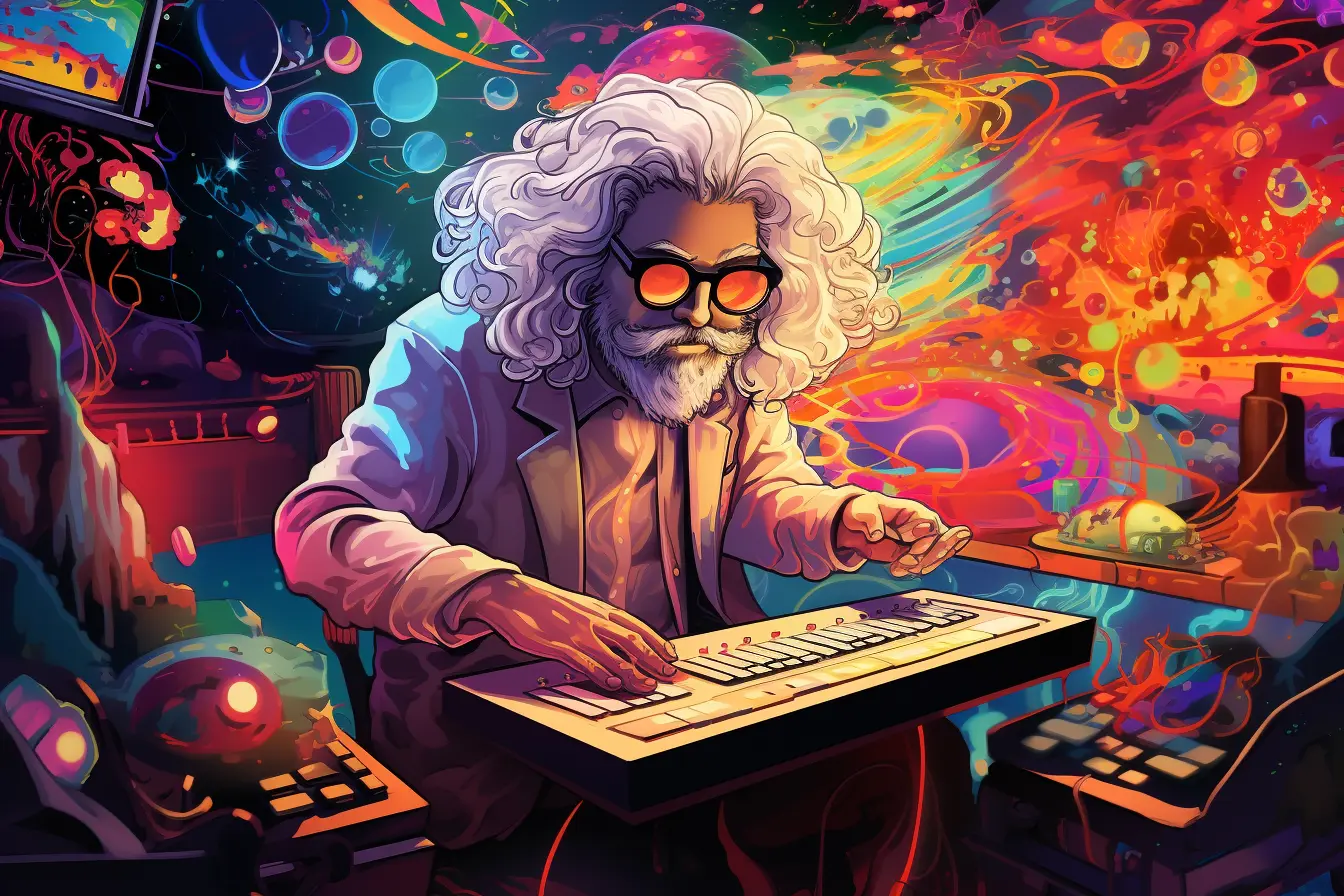
Music is absolutely central to the evolution of the human species. It is one of our few universals. Not every culture has writing, architecture, agriculture, or the number zero, but every single culture on the face of the earth creates music. All research indicates music predates language as a form of communication. It has been with us from the start, long before drugs hit the scene.
“I am a big proponent of the proto-language hypothesis, because not only is our ability to process music and sound very ancient, the development of musicality has been intrinsically linked with functions that are essential for our survival as a human community,” elaborates Kaelen. “In the wild, surrounded by predators, the ones who would increase the odds for surviving were the ones that could communicate and collaborate effectively with each other. Non-verbal musical communication primarily has to do with communicating subjective states, and the more effective one becomes at this, the more cohesive and empathic you became as a community, and the more effective you were at surviving.”
Today, primal and primitive forms of humans – babies – have much to teach us about the origins of music and its importance.
“We can see this echoed today in the behavior of infants who have just been born into this world,” explains Kaelen. “Babies will only learn to speak years after their birth – but for months before they are born, they already have the capacity to memorize and differentiate between complex musical features of individual voices. When born into this world, we use those musical features to form the most important attachments for our survival: the attachments we make with our primary caregivers, our parents, our mothers, our fathers, and our community. Our most important, and first, relationships are in essence, musical relationships.”
When we peer “under the hood” into the brain, we discover the most astounding revelations about how music affects us on a deep, physical level.
Simply listening to music affects every single part of the brain: from the frontal cortex, the most recently evolved part of the brain (the “thinky” part”), to the hippocampus (a seahorse-shaped region in the center, central to memory formation), to the cerebellum (a wrinkly bulb at the base of the skull, integral to balance and movement), to the brainstem, the most ancient part of the brain. No other activity affects more parts of the brain – not athletics, not mathematics, not language. Nothing.
Creating music can also connect the left and right hemispheres of the brain by thickening a strip of tissue that runs down the center of the brain called the “corpus callosum” – a bridge between both sides of ourselves.
What’s fascinating is that music causes the neurons inside our heads to pulse in synchrony. This is not to say that they fire in time to the beat of the music – even more beautiful, they fire in gentle waves as one.
“Music has so many qualities that absolutely nothing else can give, which is why it can make you feel good when you need it, and it can be there for you when nothing else can,” enthuses Shahar Amit, creator of Held By Sound, a web app with a “choose your own adventure” style music journeys for psychedelic therapy, who has also written musical mixes for Small Pharma’s trials with DMT for depression.(11)
Chart-topping musicians are also getting into composing music for psychedelic therapy. Musician Jon Hopkins famously produced an entire album of music for psychedelic therapy when he could have put out another album of club bangers like “Open Eye Signal.”
London-based producer Aaron Horn has produced pop hits – notably Doja Cat’s hit “Mother,” recently nominated for a Grammy – but is more interested in composing music for psychedelic therapy with his project Opal Blue. In part because he has suffered unparalleled personal tragedies, been immeasurably healed by psychedelic-induced insights, and truly understands how music can heal.
“When you look at your sadness through music, it becomes more beautiful than when you sit with your sadness alone – music allows you to explore that safely,” he says. “I want to create more and more forms of ‘functional music’ that can cause real physiological changes in people to allow people to enter that safe space. Music is the best way to create instant changes in brainwave patterns.”
Wavepaths collaborator and interdisciplinary Ph.D. researcher in sound, music, and the body – working across the Departments of Music and Neuroscience at the University of Sussex in Britain – Fiona Miller uses the same phrase to describe the role of music in therapy as “a safe space.”
She elaborates: “Sound can be used as a tool to evoke emotions and surface our unconscious and felt experiences, and can allow people to really process their emotions and understand themselves a bit better. The potential to use music as the third therapist, along with psychedelics, just makes sense to me – but just knowing that sounds alone can create heightened experiences is important in and of itself.”
If the word “psychedelic” means “to manifest the mind”, then music is the ultimate psychedelic, and a form of medicine in its own right.
“The entire concept behind our music is to bring people into altered states that resemble a psychedelic experience – without the psychedelics,” says Stacey Griffin of Amsterdam-based trio End of Time, who create “immersive, meditative sound experiences fusing acoustic and digital instruments.” They have been commissioned by Dutch company Spinoza, who host legal psychedelic retreats in the Netherlands and release albums through their app. “It just makes sense that when you add in psychedelic drugs, it amplifies that effect so much more,” she says.
Which is exactly what Kaelen demonstrated with his PhD thesis. He discovered that the neurological effects of combining music with psychedelic drugs aren’t addictive – they are synergistic. This is why music can move us so much more intensely when altered than when sober. And why it can induce such profound emotional insights.
Psychedelic Sounds Create Healing
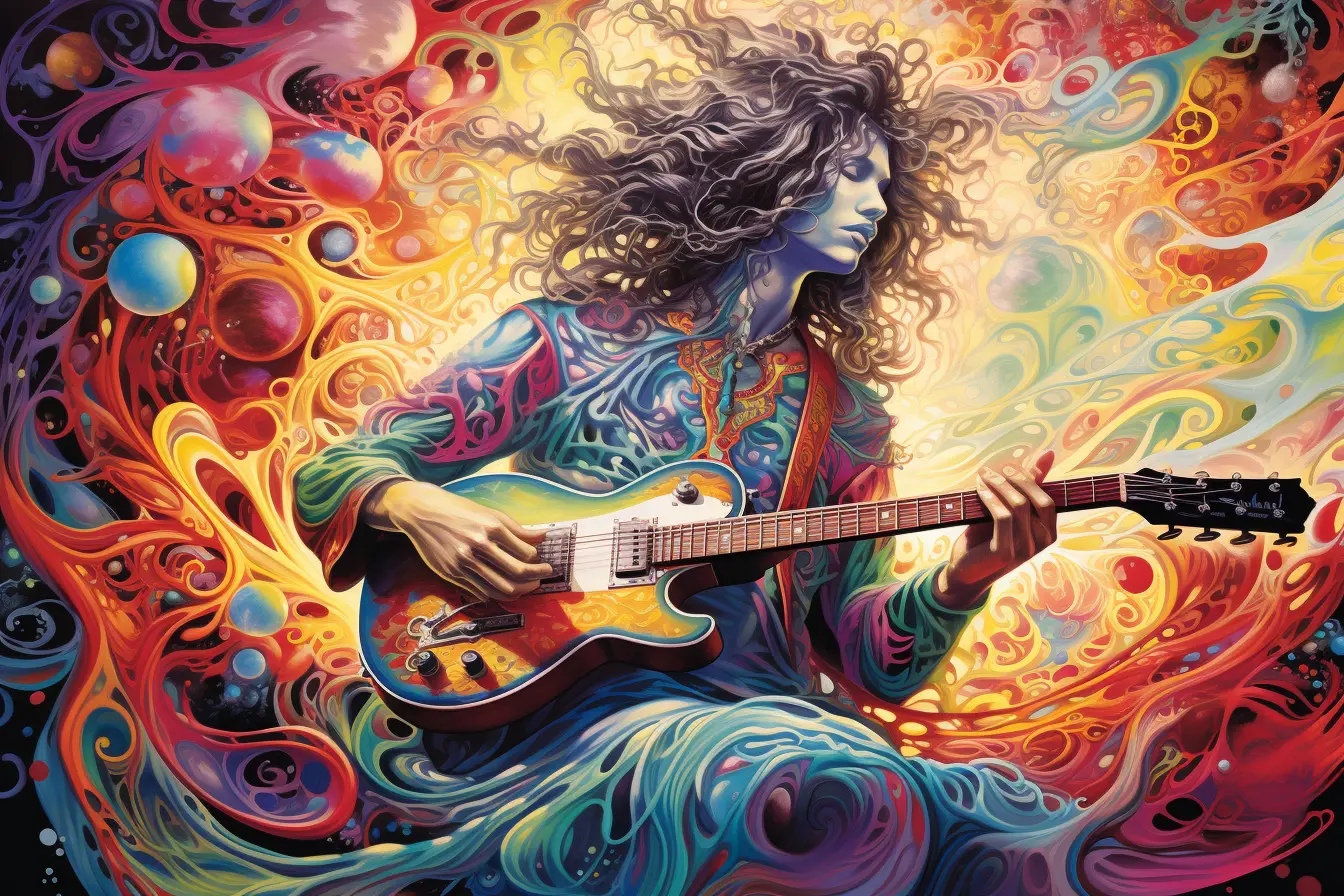
Unfortunately, most musicians composing music for psychedelic therapy are putting out tracks that are unbearably bland (Michael Pollan repeatedly describes it as “spa music” in How To Change Your Mind). End of Time, however, has crafted many deeply dark tracks that can be very challenging when altered. But as a fan of dark and intense music, I could listen to End of Time’s track “Hundred Syllable Mantra” for hours on repeat.
Canadian musician and academic Greg Jarvis, Professor of Music Business at Durham College in Toronto and lead conductor of the “transatlantic experimental orchestra” Flowers of Hell, believes that music for a psychedelic trip should have dark passages. Unfortunately, these just don’t exist in the vast majority of playlists crafted for therapy that one can find on Spotify and garden variety apps.
“The Spotify playlists are like ham radio – just blandness and sameness,” comments Jarvis. “When it’s just somebody with a keyboard and a gong, it just doesn’t feel true to the emotional journey that music is supposed to create, whether that’s a cinematic composition, or music designed for therapy, or a psychedelic journey. Music needs to have a flow of emotions, and humans don’t feel just one emotion – which is why it’s so important to bring darkness into this genre.”
For his part, he has just created a new album intended for mediation and therapy, Keshakhtaran, explicitly designed to contain dark elements. “Spiritual trips and therapy sessions all involve journeys through darkness – and so should the accompanying music,” he says.
But whether bland or dark, Kaelen and his contemporaries have always felt the most important innovation they could bring to the field was to “craft personalized music sessions in their own clinical sessions, which they can modify on the fly for each individual patient.” No one session will ever be the same, the music will always be novel (and unfamiliar), and it will always be formed with individual participants’ tastes in mind.
This moved Kaelen to leave academia to pursue Wavepaths full-time in 2019, now described as “a tool that facilitates live, unique, personalized music experiences for therapeutic and personal use.” The keyword being: personalized.
“Personalisation is so important in this process to avoid triggers,” explains Robert Thomas, Music Lead and Generative Software Engineer at Wavepaths, who has previously collaborated with Massive Attack, Brian Eno, Imogen Heap, and Hans Zimmer. “With our technology, it’s impossible to have previous associations, and if you were to run the session again, it would be different every time. The music we create has infinite possibilities,” he says.
There are ways licensed therapists can customize every session to the needs of their patient, Thomas explains. “They can control the intensity, the kinds of instruments used, the length of sessions – if you want to move from still emotions into sad emotions into bright and optimistic emotions, it can all be customized to what one person really needs. The tool is very open to how it can be used – numerous templates and a great amount of flexibility is built into the system.”
One of the worst misconceptions about Wavepaths, says Thomas, is the false concept that the technology uses AI, “machine learning” and other new tech platforms in a bullish attempt to erase the human element – when nothing could be further from the truth.
I only discovered after my trip for grief that so many of my favourite neo classical pianists, including Robert Rich, Cristina Vantzou, Gregory Haines, Anilah and Jon Hopkins – had donated musical patches (small portions that can be mixed into larger compositions).
“Wavepaths is about extending the creative possibilities of the artist,” Thomas clarifies.
Grief, Pain, and Healing: Navigating The Psychedelic Process
Later in the trip I reflected on all the beautiful things she gave me. She taught me to read and write, and gave me my love of words.
Back to my Saturday night with a playlist: About twenty or thirty minutes into the trip, my mother wasn’t on my mind. I was – as usual – worrying about work and fussing over my to-do lists.
Out of nowhere, the grief over my mother rose up like a monster – and I felt the pain and the loss so profoundly that it was truly unbearable. I live alone – thank god – so I could wail and bawl uncontrollably. So hard, many times I had to sit up and take off my blindfold and just heave with sobs.
I haven’t cried that hard over my mother in over a year and a half. At times I felt like I couldn’t breathe. I wanted to turn the music off many times. Yet I persevered – because I know that suffering is necessary sometimes – you need to move through it. Burying the pain just creates poisonous wounds deep inside that fester and never heal.
In formal psychedelic therapy sessions, you need to go through this – tapping out was not an option.
I reflected on how my mother was so beautiful, and so brilliant. And the only person who has ever truly understood me – nobody else ever really has, not even the boyfriends who truly loved me. Nobody will ever replace her. I wailed, and I sobbed.
I reflected on how my mother was, hands down, the best writer in the family. When she read the first draft of my first book – which covered the evolutionary importance of sex, drugs, and music – she simply remarked: “So the message is: Most fun things in life are bad for you, but nothing will kill you faster than having no fun at all.” I spent three years writing that book, and my brilliant mother summed it all up in one sentence effortlessly. How annoying.
I bawled as I pondered my future, and how I’ll live the rest of my life without her. She lost her father when she was 64 – I lost her when I was 38. I will never not be bitter.
I bawled as I thought about the fact that she should have lived to be 90, like both her parents, but died two days before her 70th birthday (happens when you start smoking at the age of twelve).
It was all too much.
But later in the trip I calmed down, and I reflected on all the beautiful things she gave me. She taught me to read and write, and gave me my love of words.
She was bloody hilarious, and could come up with a quip for any situation. The kind of person that when you see “Martha Harron has commented on your post on Facebook,” you know it’s going to make you laugh.
And she was a brilliant editor. For the last decade of her life, she was the personal assistant to Christopher Hampton, a playwright and screenwriter who has been awarded the Oscar twice for his work – most recently for The Father in 2021, a script my mother edited. I’ll never forget the moment when Hampton called me as she lay dying in the hospital to ask how she was. “By the way Christopher, congratulations on your Oscar.” His reply: “Oh – that doesn’t really matter right now.”
I never would have persevered and eventually achieved my greatest ambition – to write a book by the age of 30 (I signed my first contract on my 30th birthday) – without her ceaseless encouragement. Not every kid gets that – most are just told to “get a real job.” But my mother knew the power of words, and was my biggest fan and an unparalleled source of wisdom and support.
But most importantly: she was literally made of love. Many of my friends have said they’ve never met a mother who adored her children so unconditionally and with such sweet, blind devotion. She never even needed to tell me off for misbehaving – I never misbehaved, because I never wanted to disappoint her in any way.
She could forgive anything of anyone she loved – and all my friends have said that I am the same, which is a beautiful quality.
She had an intense passion for social justice, following every micromovement in politics, easily enraged by corruption and injustice. And I am the same.
I reflected on all that she gifted to me – all the things about myself that I love that only exist because of her.
I don’t believe in an afterlife… but I suddenly felt infused with her spirit, and realized how much of her lives on inside of me. It was profound. I felt blessed. I felt the responsibility to carry on her spirit. And I felt so proud to be her daughter.
The next day, I felt a lightness and gratitude for being alive that I hadn’t felt in many months. I kept thinking about funny things she had done – such as writing a hate letter to The Toronto Star when they had the audacity to make minor edits to the obituary she wrote about her father (“You can cross me in many ways in life, but mess with my writing and I shoot to kill,” she scoffed). Or when, in the first draft of my book, where I mentioned that the “secret recipe” for Coca-Cola today still contains de-cocainised coca leaf, she wrote in the margins: “Is that why it tastes better than Pepsi?” I’ve been giggling constantly for days, and instead of the profound emptiness and loneliness I’ve felt for many months, I’ve felt full of joy – full of my mother’s spirit, full of her humor and her values, and her boundless love.
Psychedelic therapy cannot bring my mother back. And there will be many more moments in the future when I feel indescribable sadness. The grief will be a long road. But the music I listened to, combined with the strong psychedelic I had the courage to take, invoked something incomparable and unparalleled – more powerful than any of the therapy or advice from grief counsellors have given to me.
My revelations and the cathartic release of pain added fuel to the spark of her memory, and although painful at times, the combination of music and psychedelics helped me remember and treasure all those amazing, complex, beautiful things that made my mother who she was and which make me who I am today.
Instead of an indescribable sense of emptiness, I feel infused with joy and gratitude. Gratitude that I had such a person for a mother and gratitude for all that I am that came from her.
And if my past experiences with psychedelics are anything to go by, this will stay with me. Forever.
- 4-AcO-DMT. (n.d.). PsychonautWiki. Retrieved August 30, 2023, from https://psychonautwiki.org/wiki/4-AcO-DMT
- Wavepaths. (n.d.). Wavepaths. https://wavepaths.com/
- My Psychiatrist is a DJ. (2022, March 17). Proto.life. https://proto.life/2022/03/my-psychiatrist-is-a-dj/
- Ceustemon, S., Dream Job: Science impresario at summer music fests. New Scientist. Retrieved August 30, 2023, from https://www.newscientist.com/article/dn25882-dream-job-science-impresario-at-summer-music-fests/
- Cormier, Z. (2021, April 15). Psilocybin Therapy May Work as Well as Common Antidepressant. Scientific American. https://www.scientificamerican.com/article/psilocybin-therapy-may-work-as-well-as-common-antidepressant/
- Cohen, S. (2017, June 22). Inside the Hollywood LSD Therapy That Changed Cary Grant’s Life. Vulture. https://www.vulture.com/2017/06/cary-grants-lsd-therapy-the-inside-story.html
- Cormier, Z., Sex, Drugs and Rock ’n’ Roll is a review of what scientific research says about our core hedonistic tendencies. (2015, May 15). The Globe and Mail. https://www.theglobeandmail.com/arts/books-and-media/book-reviews/sex-drugs-and-rock-n-roll-is-a-review-of-what-scientific-research-says-about-our-core-hedonistic-tendencies/article24453994/
- Cormier, Z., Forever my favourite woman. (2019, March 8). Zoetic. https://zoecormier.wordpress.com/2019/03/08/forever-my-favourite-woman/
- Music As Medicine. (2022, March 17). Proto.life. https://neo.life/2022/03/music-as-medicine/
- Kaelen, M., Giribaldi, B., Raine, J., Evans, L., Timmerman, C., Rodriguez, N., Roseman, L., Feilding, A., Nutt, D., & Carhart-Harris, R. (2018). The hidden therapist: evidence for a central role of music in psychedelic therapy. Psychopharmacology, 235(2), 505–519. https://doi.org/10.1007/s00213-017-4820-5
- Cormier, Z. (2018, October 9). The power of music for health. BBC Science Focus Magazine; BBC Science Focus Magazine. https://www.sciencefocus.com/the-human-body/the-power-of-music-for-health/
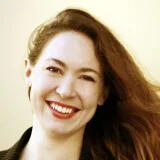 Zoe Cormier
Zoe Cormier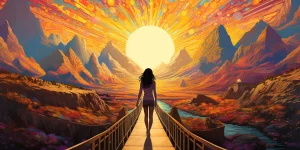
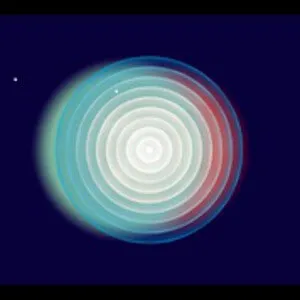
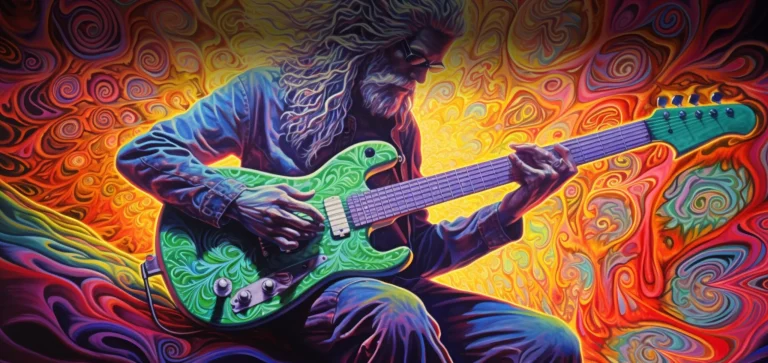
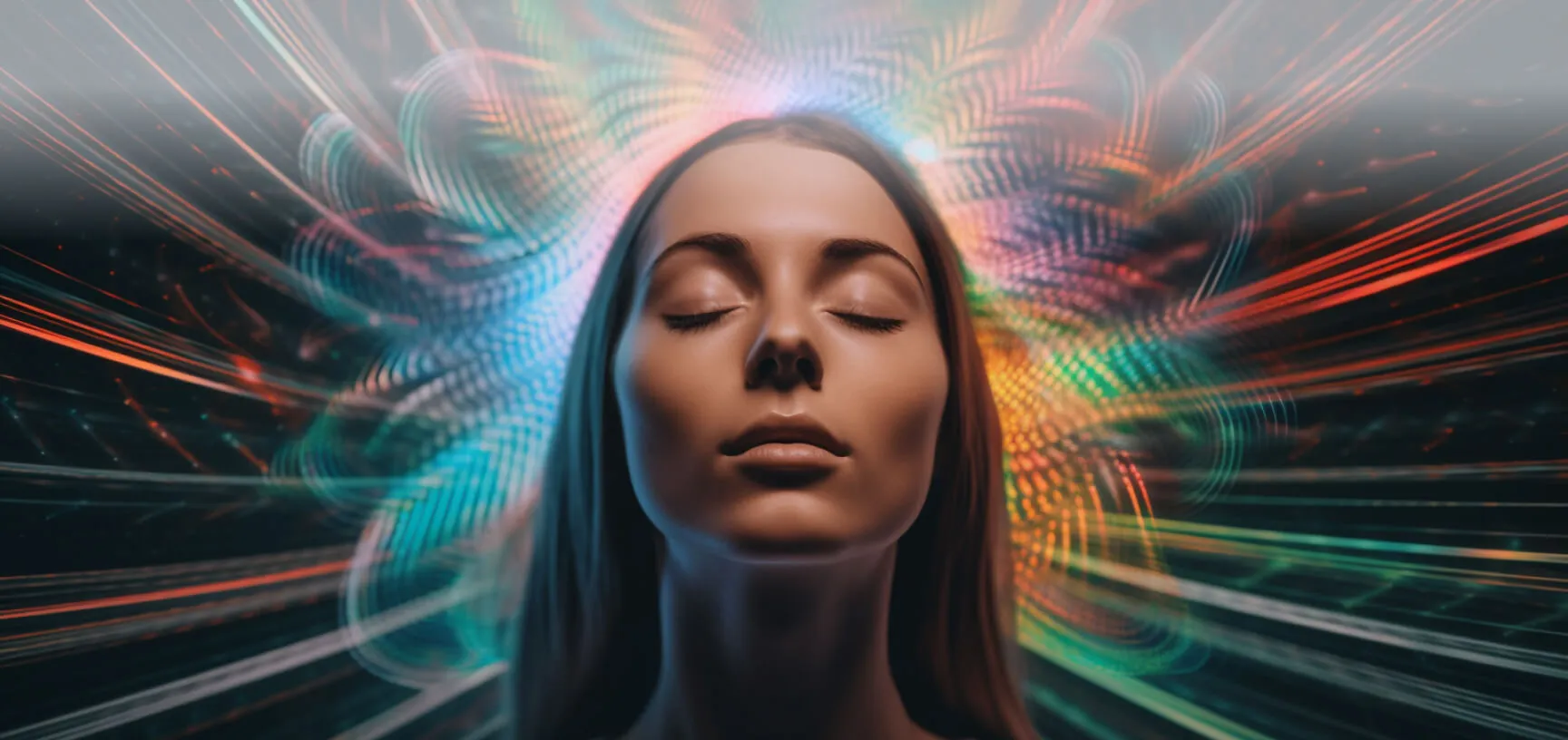
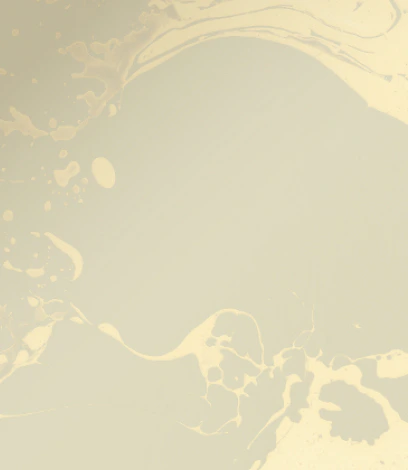
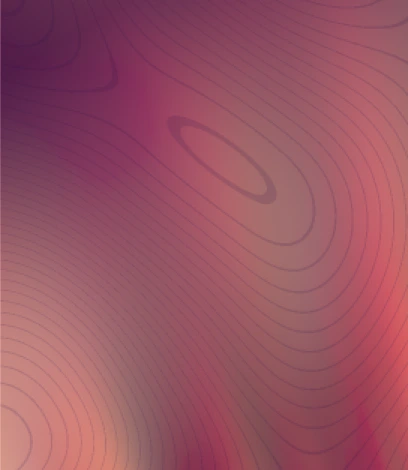
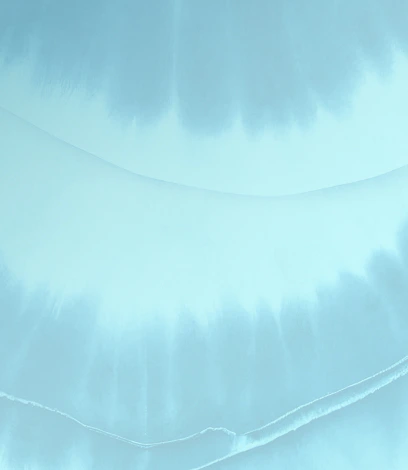
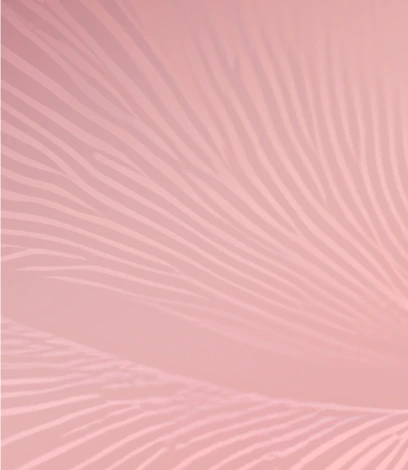
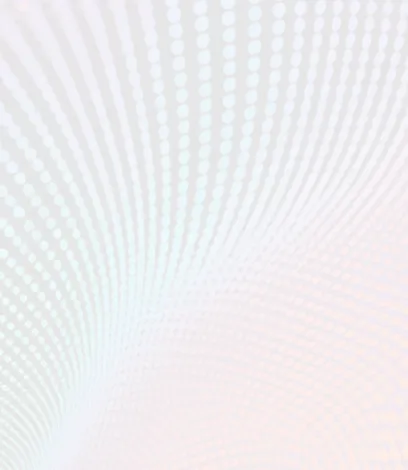
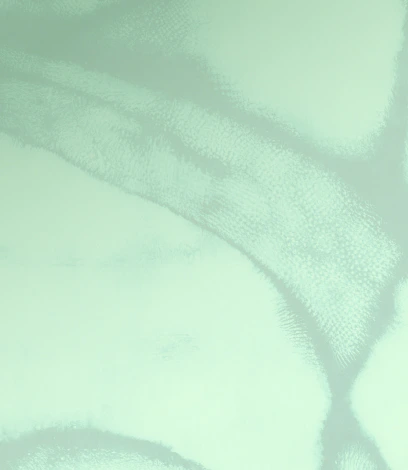
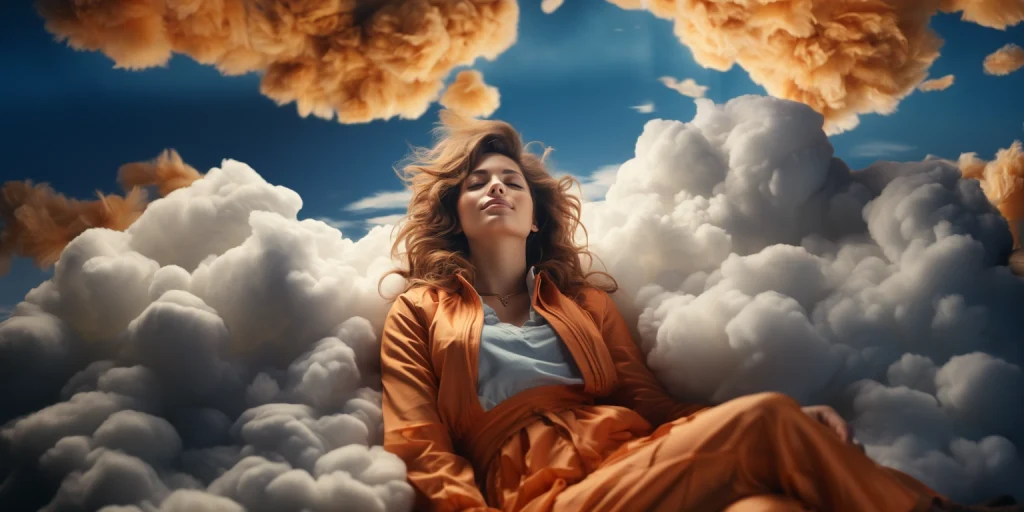
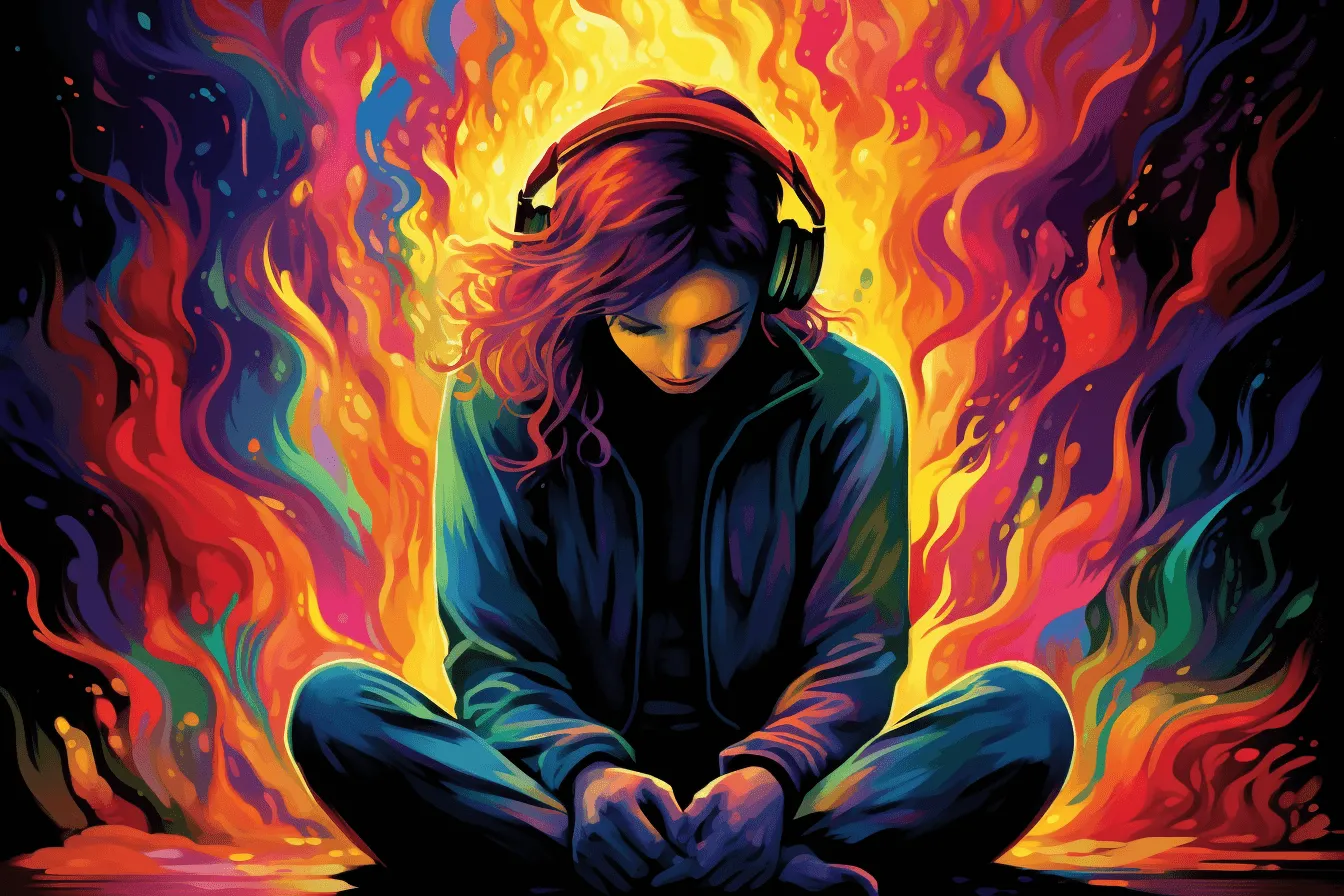
 David Connell
David Connell


